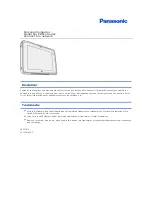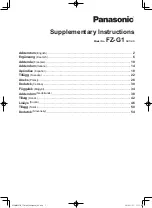
23
23
Index
Contents
Index
Contents
USING THE TOUCH STRIPS
Slide your finger over the Touch Strip to quickly zoom in or out, scroll up or down, or perform other functions
with your secondary hand while using your dominant hand to work with your pen or mouse. You can also set
each Touch Strip to issue custom keystrokes. For example, you might set a Touch Strip action to cycle
through layers when working in Photoshop. You can use the Touch Strips in three different ways:
•
Standard operation:
Slide your finger up or down to zoom, scroll, or issue the assigned keystroke
function.
•
Continuous operation:
Press and hold your finger at either end of the Touch Strip to continuously
scroll. This is useful for scrolling through long documents or web pages.
•
Single step operation:
Press and release your finger at either end of the Touch Strip to zoom, scroll, or
issue the assigned keystroke function one step at a time.
By default, the Touch Strips enable you to zoom in most graphics applications and to scroll in other
applications. Each Touch Strip can be independently customized to meet your needs.
Tip:
Photoshop users who frequently change brush sizes may want to assign the [ and ] keys to a Touch
Strip. Sliding your finger up or down the Touch Strip will then change the brush size without the need to
reach for the keyboard or access the Photoshop B
RUSHES
palette.
See customizing tablet Touch Strips and advanced Touch Strip settings if you would like to customize the
way your tablet Touch Strip(s) work.
6x8 / A5 tablet shown.
To use the tip of your Intuos3 pen to operate the Touch Strip, rest the pen tip
against the edge of the Touch Strip adjacent to the tablet’s active area. Then
press hard enough to issue a click and move the pen tip up or down along
the Touch Strip edge. (Only the inside edge of the Touch Strip responds to
pen input.)
Press and hold here for
continuous operation, or
press and release for
single step operation.
















































